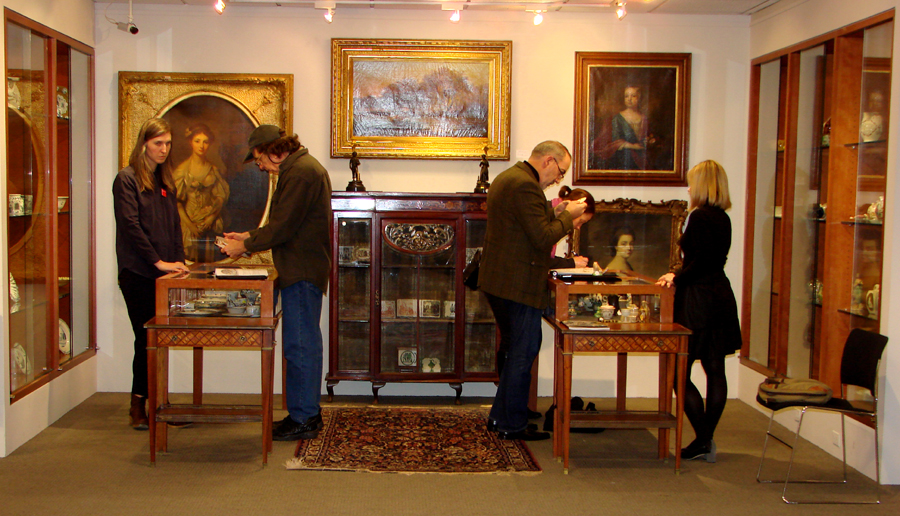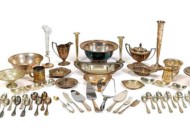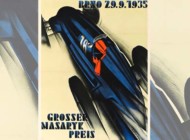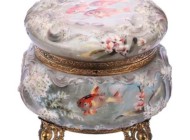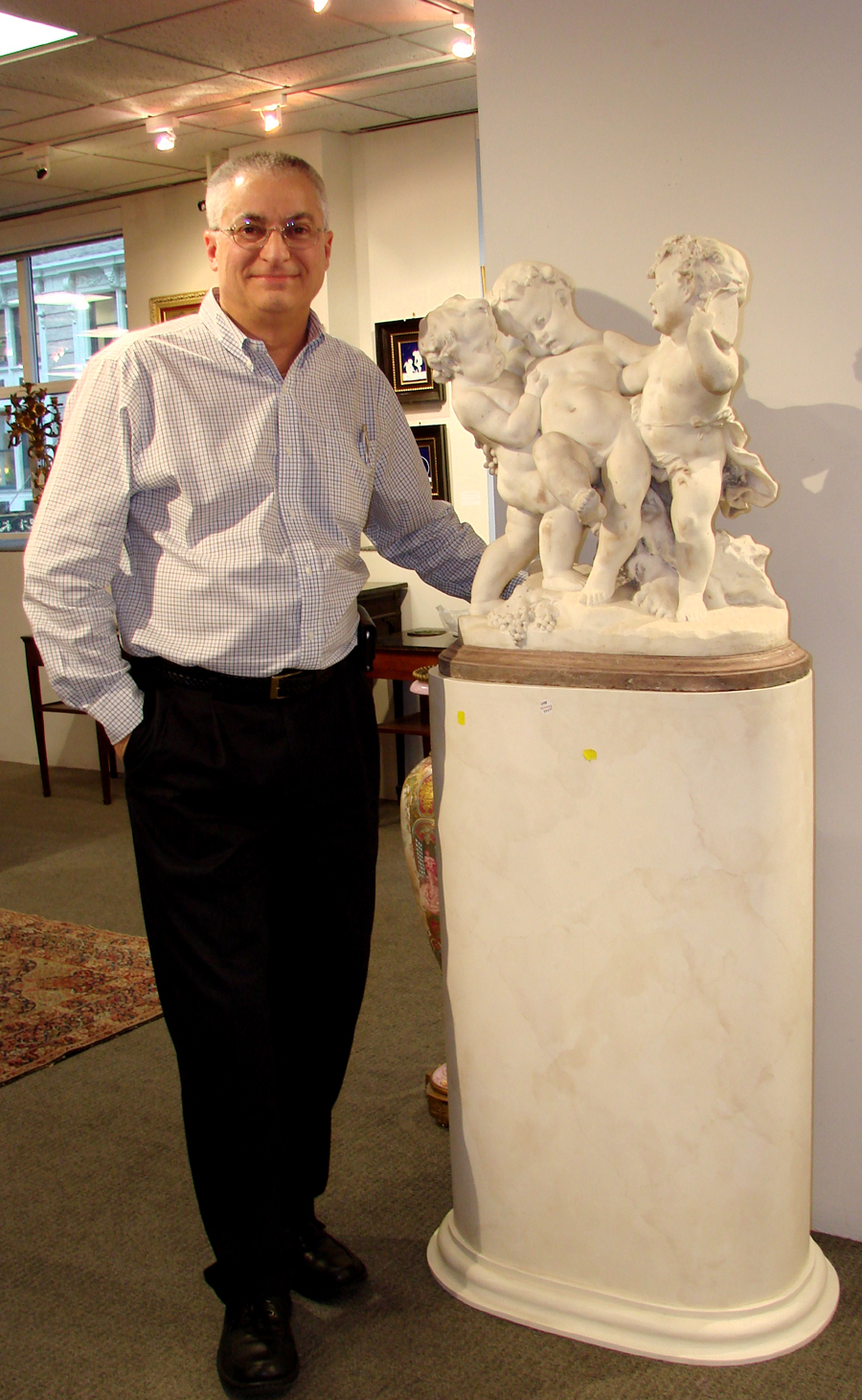
Stuart Slavid, Skinner’s senior vice president and director of European furniture and decorative arts, stands next to a French white marble sculpture dating to the Nineteenth Century.
Review and Onsite Photos by Rick Russack;
Additional Photos Courtesy Skinner Inc
BOSTON, MASS. — Skinner’s April 8 European furniture and decorative arts sale included French, English and Continental furniture, tapestries, silver, paintings and a wide range of ceramics and porcelains. The sale also offered the first part of the collection of Seventeenth and Eighteenth Century English pottery assembled over 48 years by Troy D. Chappell. Internet and phone bidding was robust and results were strong across the board. The sale grossed $1,211,550 and was led by an Eighteenth Century porphyry head of a Roman emperor that finished at $98,400, more than 24 times its high estimate.
After the sale, Stuart Slavid, director of Skinner’s European furniture and decorative arts department, told Antiques and The Arts Weekly that the final price of the porphyry head was not a surprise. “We knew from the presale interest and the number of requests we had for condition reports that the piece would do well. We had 14 phone lines in use and it came down to a contest between one of the phone bidders and an Internet bidder.” Slavid also said that 98 percent of the furniture sold.
The auction began with 150 lots of silver. The top grossing lot of that portion of the sale was a Gorham sterling silver presentation loving cup. It had been presented to J.F. Deems, superintendent of the American Locomotive Company, by his employees; it was more than 18 inches tall and the silver weighed more than 213 troy ounces. Entirely hand wrought, the cup was completed on June 20, 1901, by the same silversmiths that produced Gorham’s Martelé line. It sold for $12,300.
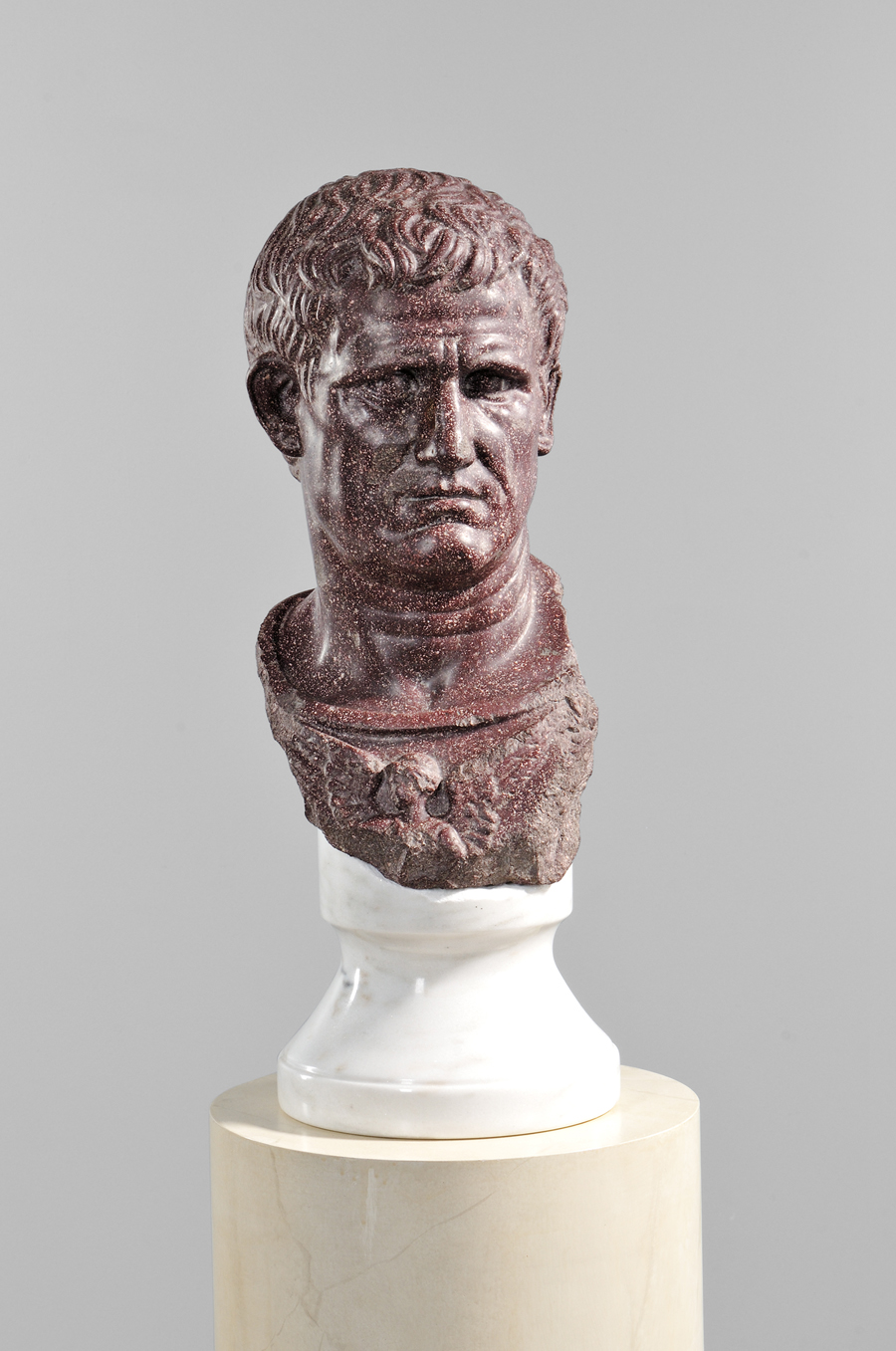
The top grossing lot of the sale, bringing $98,400, was an Eighteenth Century porphyry head of a Roman emperor. Just under 27 inches tall, it was cataloged as “after the antique.” Its selling price was more than 24 times the estimate.
Another presentation piece, also a loving cup, weighing about 28 troy ounces, had been made by Dominick & Haff in the Aesthetic manner, and was decorated with a dragonfly and various water plants. It was dated 1881 and brought $4,305. Sets of flatware did well, with an assembled English sterling flatware service, late Nineteenth to mid-Twentieth Century by various makers, all of the same rose pattern, bringing $7,380. The service contained 465 ounces of silver. Another flatware set, a service for 12, plus serving pieces, Elizabeth II by Tiffany, London, circa 1959–1960, finished at $4,613. That set had more than 178 ounces of silver.
One piece had a connection to the Game of Thrones television series. In the first episode of season five, Tyrion Lannister is shown drinking from a distinctive small gold cup, which was a reproduction of an ancient original found in a tomb in Greece in 1888. It was decorated with a man tying a rope to the leg of a bull. Skinner offered a 1906-–07 sterling silver-gilt reproduction of that cup. It went for $431, but it is unclear if it went to a Game of Thrones fan.
The Troy D. Chappell collection of early English pottery is well-known and published. It included early slipware, tin-glazed earthenware — often referred to as delft — salt-glazed stoneware and lead-glazed creamware. The 148 lots grossed $276,750, and Slavid said the results were an accurate barometer of the market today. Four institutions were among the buyers. Chappell was well pleased with the results, according to Slavid. Leading the collection was a combed slipware drinking cup, circa 1690–1700. It was 4 inches tall, decorated with vertical brown stripes and enhanced with S scrolls. It brought $18,450 from Rob Hunter, editor of Ceramics in America, bidding for a collector.
The evening before the sale, Hunter, one of the foremost authorities on English ceramics, gave a well-attended talk on the Chappell collection, “The Art and Mystery of English Pottery,” emphasizing the importance of several pieces in the collection. As it turned out, he bought some of those pieces and later told Antiques and The Arts Weekly that he was bidding for four museums and two private collectors. In addition to the combed cup, Hunter bought a salt-glazed stoneware “Freckle” wine bottle, circa 1675–85, probably made in London, paying $2,214. He also bought a “Metropolitan” slipware drinking jug, circa 1650–60, paying $800 for it. He later called it a “most important piece.”
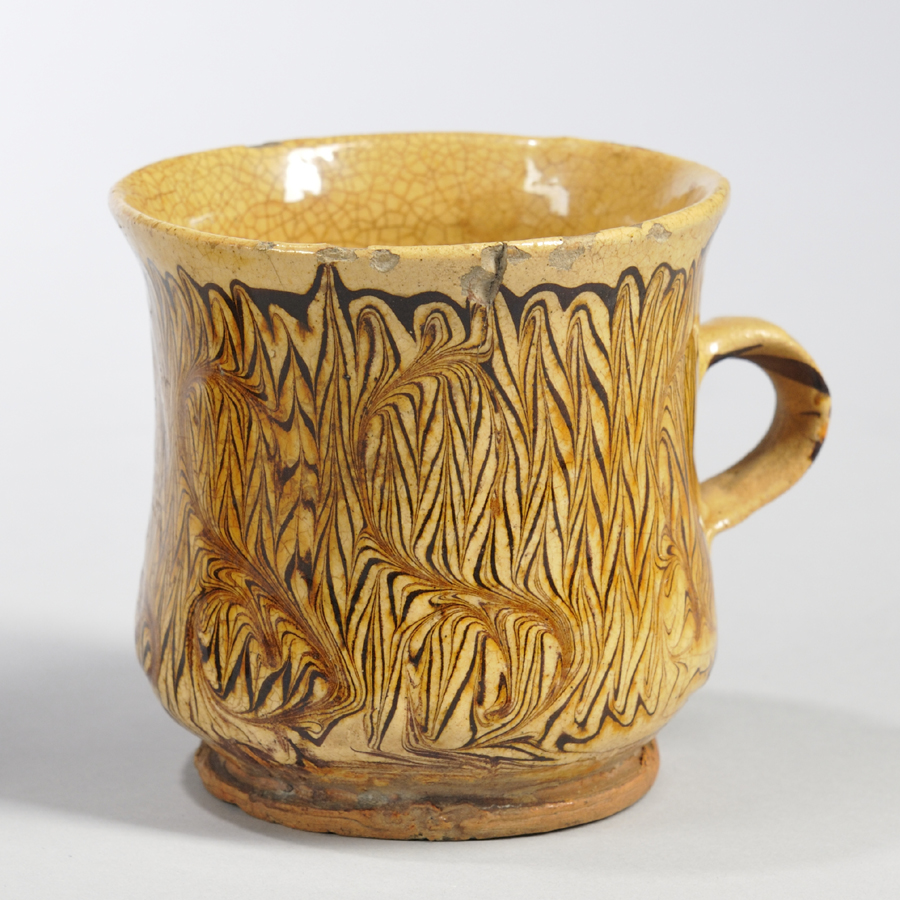
The piece that brought the highest price of the Chappell collection was this combed slipware drinking cup. Note the unusual S scroll decoration. Dating about 1690–1700, it earned $18,450.
Hunter, however, did not have the field to himself, being outbid more than once by Jim and Janet Laverdiere, collectors from the North Shore. They bought a salt-glazed stoneware ale mug, circa 1703–10, probably made in London, for $6,765 and some early delft. Hunter was also outbid on a black-glazed red earthenware drinking cup, circa 1750–80, probably made in Devonshire or Somerset, which sold for $4,613 to an Internet bidder.
Hunter’s talk on the Chappell collection can be viewed at www.youtube.com/watch?v=UuZZQQxdeZc.
Chappell, now in his early 80s, started collecting English pottery in 1968 and began thinking about passing his collection on to others when Hurricane Isabel brought five trees down on his Virginia home — without causing any damage to the pottery collection. His objective in forming the collection, as he wrote in the 2001 issue of Ceramics in America, was “to assemble and contrast pieces to demonstrate most of the manufacturing materials and forming techniques, manners of shaped and colored decorations and progression of styles that dominated English trade and perceptions through the period of about 1630 to 1780. Some collectors focus on dated or unusual specimens, while others care for handsome objects. I try to emphasize the diverse and sometimes subtle ways by which potters and decorators produced their wares.”
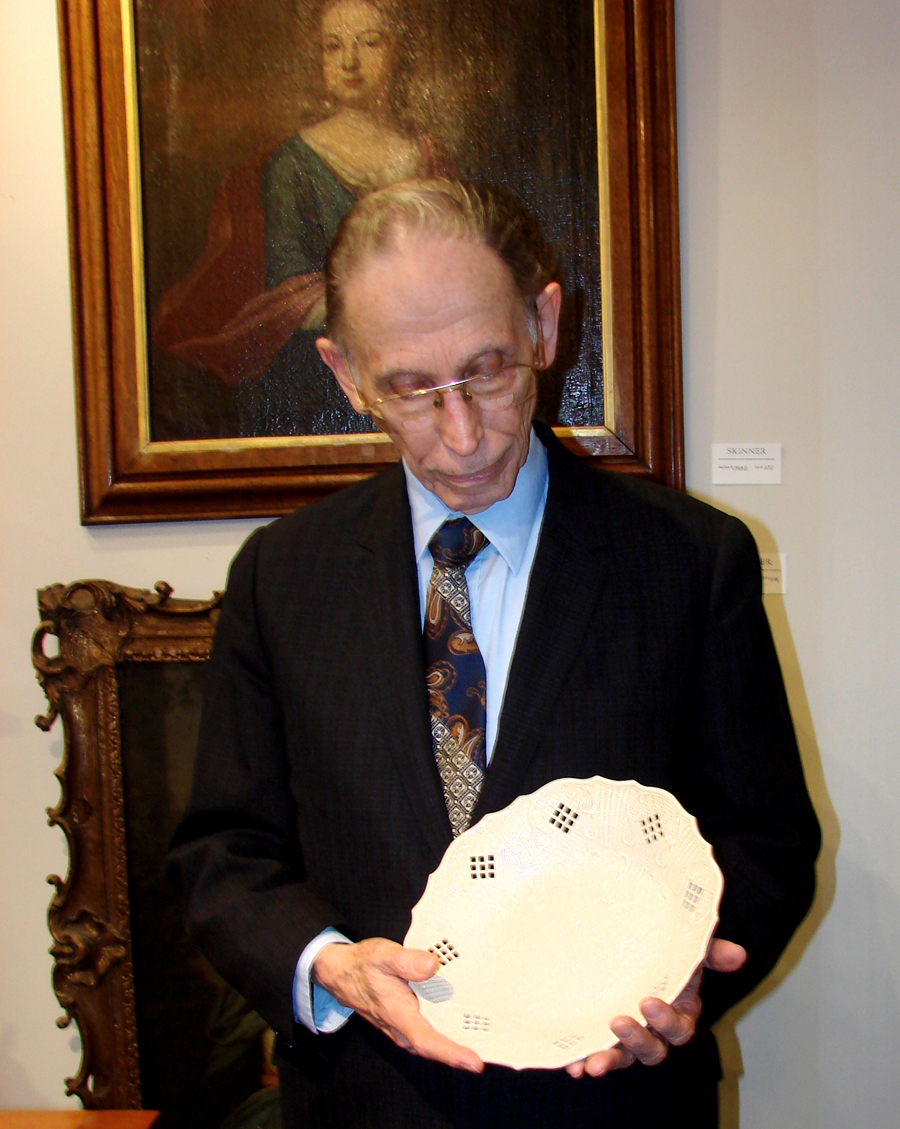
Troy Chappell collected early English ceramics for 48 years. He is shown holding the first piece he bought — in December 1968 — a white salt-glazed stoneware plate with a pierced border.
Each object in his collection of 400 pieces was bought with those goals in mind. Skinner promoted the sale well, and Slavid had been posting examples from the collection on Facebook for several weeks prior to the sale. The second and final portion of the Chappell collection is scheduled to be sold in mid-July.
European furniture and decorative arts did well. A Nineteenth Century Italian neoclassical fruitwood and olivewood marquetry commode realized $4,920. A Nineteenth Century Spanish baroque-style vargueno on stand, with numerous fitted drawers with inlaid and polychrome painted plaques, on bun feet, achieved $4,613. A Georgian-style japanned secretary with an overall red ground and gilt decorated chinoiserie motifs, including birds and vines, brought $3,690. It was thought that the japanning was done later and the piece had some other condition issues.
An unusual pair of Nineteenth Century Anglo-Portuguese-style side chairs with carved crest rails and reticulated carved splats may have been a bargain, reaching only $185. Also doing well was a pair of Nineteenth Century Derbyshire Blue John obelisks, which brought $12,300. “Blue John” is a type of fluorite, found only at the Blue John cavern in Derbyshire.
A surprise was a red chalk drawing attributed to the school of Edmé Bouchardon (French, 1698–1762). It depicted a reclining male nude, and was signed or inscribed “Bouchardon.” Estimated at $800, it reached $18,450. A large portrait of Louis XIV from the studio of Hyacinthe Rigaud (French, 1659–1743) fetched $15,590. The sale also included a number of attractive, inexpensive oils. “Castle Island, Loch Leven” by William Carse (British, Nineteenth Century) only reached $400, and a pair of Neapolitan school paintings depicting the eruption of Mount Vesuvius, one in daylight and one by moonlight, sold for $677.
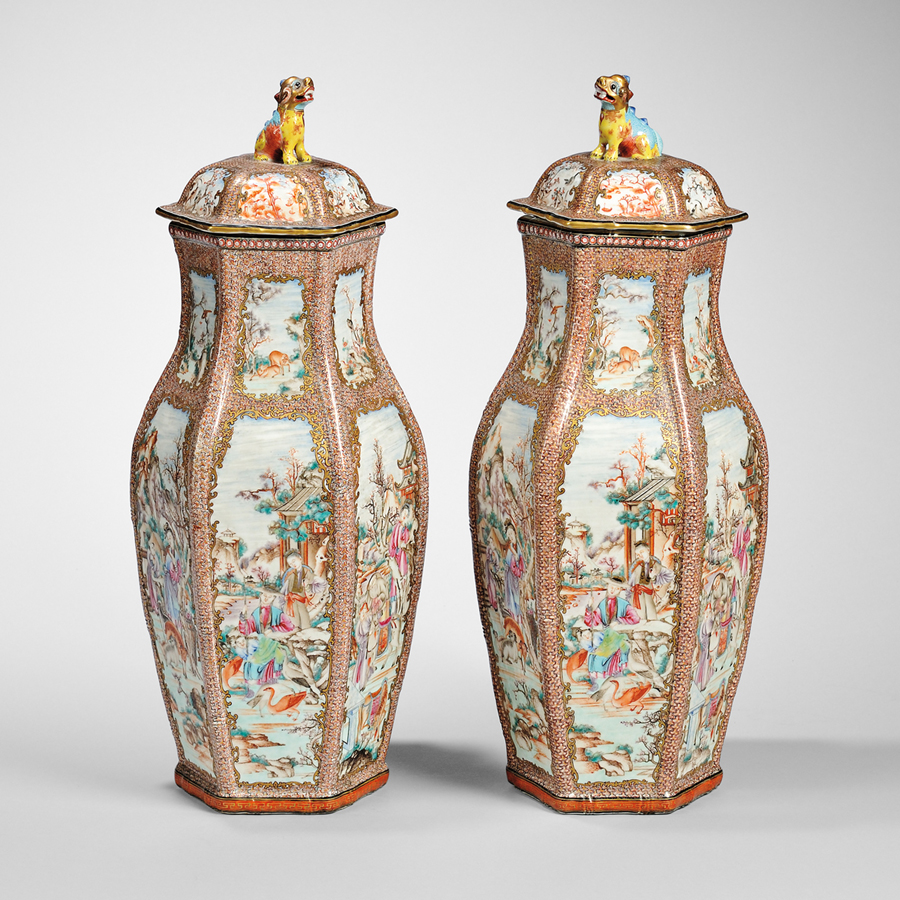
Selling for $18,450, triple the high estimate, was this 21-inch-high pair of Chinese export vases with covers. The polychromed panels were decorated with scenes of courtesans, scholars and landscapes.
European and Chinese export porcelains performed well. Selling for the highest price was a pair of Mintons pâte-sur-pâte vases and covers, decorated by Louis Solon and dated to the late Nineteenth century. Solon is generally credited with developing the pâte-sur-pâte type of decoration and the pair brought $24,600. A set of 12 Mintons pâte-sur-pâte plates, circa 1917, decorated by Albion Birks with classical figures in the borders and the artist’s monogram, realized $19,680.
A pair of Berlin porcelain KPM plaques, one depicting a bird-seller and the other depicting a maiden with her bird, finished at $5,535. A Nineteenth Century Napoleon III gilt-bronze centerpiece, just 15 inches tall, with a Sevres-style porcelain bronze-mounted charger, went out at $8,610. A pair of Chinese export porcelain vases with covers, late Eighteenth Century, hexagonal in shape with brightly enameled foo lion finials and polychrome enameled and gilded side panels, 21 inches tall, finished at $18,450.
Prices for European majolica generally fell within estimates. A Minton majolica beehive-shaped cheese dome and stand, circa 1865, earned $3,444, and an 1870 George Jones punch bowl, circa 1870, modeled with a reclining figure of Punch, ended up at $3,075. There was Palissy ware by a variety of makers and it, too, sold within estimates. For example, a Palissy ware platter by Charles-Jean Avisseau , circa 1862, reached $2,460, while a Palissy platter by Joseph Landais, circa 1855, with snakes, frogs and lizards, fetched $1,845.
All prices reported include the buyer’s premium.
For additional information, www.skinnerinc.com or 508-970-3240.

